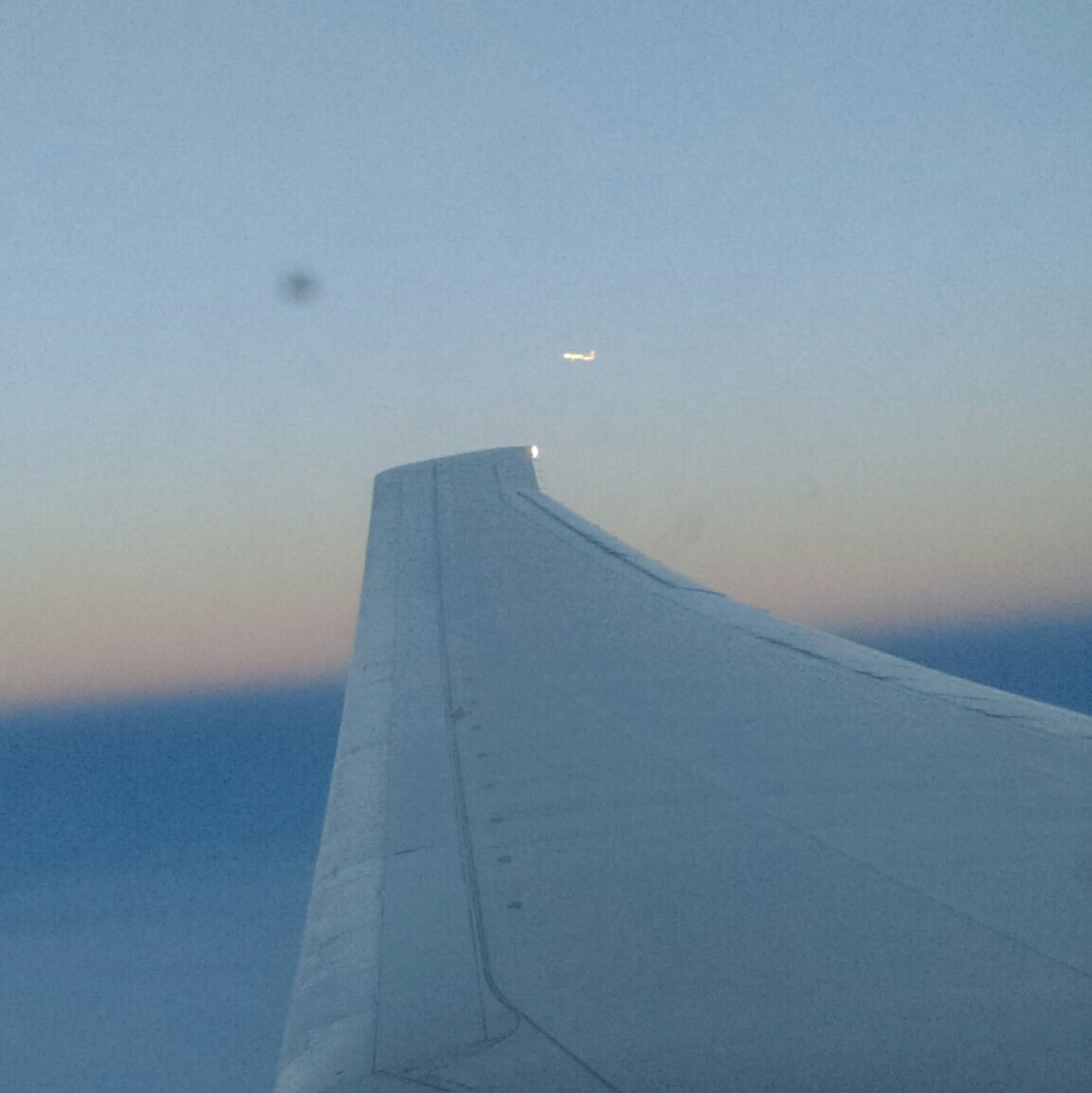Hm, in dem Video das dankenswerter Weise von
@Zz-Jones hier zuletzt eingestellt wurde, war etwas, das mich aufhorchen liess.
Es beschreibt die einzelnen Notfallmanagementsysteme der B777, unter anderem auch die Notfallbeleuchtung. Diese schaltet sich automatisch ein, sobald die reguläre Stromversorgung, sei es duch GPU, APU oder regulär in flight, abgeschaltet wird. So auch wenn einer der DC Bus abgeschaltet wird, wie im Video deutlich.
Nun war mir vermutlich wie jedem anderen hier klar, dass es in der Kabine eine vorgeschriebene Notbeleuchtung gibt, die EXIT signs, die pathways, die cross aisle ways usw.
Was mir nie bewusst war ist, dass es auch Notbeleuchtung an der Aussenseite der Kabine gibt: und zwar über jeder Tür und über jedem above wing emergency exit. Sie dienen bei einer Notfallevakuierung in Dunkelheit der Orientierung der Personen, welche das Flugzeug durch Notausgänge und Türen verlassen.
Die sonstige Aussenbeleuchtung eines Verkehrsflugzeugs dürfte auch jedem klar sein, von den strobes über rot und grüne postition lights, rotating beacons bis hin zu den landing und taxi lights.
Ich habe versucht im Internet ein Bild zu finden, das die oben beschriebenen emergency exit lights an der Aussenseite der Kabine zeigt, habe aber keines gefunden.
Nun mein Gedanke: Es gibt ja die Zeugenaussage der Seglerin, die ein Flugzeug gesehen haben will, das "merkwürdig glühte." Bisher habe ich auf diese Aussage nie viel gegeben, weil ich mir dachte, was sie als "Feuerschein" interpretierte, hätte einen sehr baldigen Absturz verursacht, wenn es denn Feuer gewesen wäre.
Jetzt aber denke ich: Was wenn sie das vollkommen ungewohnte Bild eines Fliegers mit eingeschalteten emergency exit lights gesehen hat? Wir gehen ja davon aus, dass während dem Flug die reguläre Stromversorgung teilweise abgeschaltet wurde. Wenn dann folgerichtig diese external emergency exit lights angegangen sind und die regulären strobes etc. abgeschaltet waren... hätte man dann ein Flugzeug sehen können, das "merkwürdig glüht?" Könnte das dieser Zeugenaussage wieder mehr Gewicht beimessen?
Die emergency exit lights werden aus Batterien mit einer Mindestkapazität von 30 Minuten gespeist. Diese werden während der regulären Stromversorgung wieder geladen.
Für die Techniker unter uns habe ich eine Vorschrift für alle amerikanischen airliner gefunden, die jene Aussenlichter beschreibt:
(g) Exterior emergency lighting must be provided as follows:
(1) At each overwing emergency exit the illumination must be -
(i) Not less than 0.03 foot-candle (measured normal to the direction of the incident light) on a 2-square-foot area where an evacuee is likely to make his first step outside the cabin;
(ii) Not less than 0.05 foot-candle (measured normal to the direction of the incident light) for a minimum width of 42 inches for a Type A overwing emergency exit and two feet for all other overwing emergency exits along the 30 percent of the slip-resistant portion of the escape route required in § 25.810(c) that is farthest from the exit; and
(iii) Not less than 0.03 foot-candle on the ground surface with the landing gear extended (measured normal to the direction of the incident light) where an evacuee using the established escape route would normally make first contact with the ground.
(2) At each non-overwing emergency exit not required by § 25.810(a) to have descent assist means the illumination must be not less than 0.03 foot-candle (measured normal to the direction of the incident light) on the ground surface with the landing gear extended where an evacuee is likely to make first contact with the ground outside the cabin.
(h) The means required in §§ 25.810(a)(1) and (d) to assist the occupants in descending to the ground must be illuminated so that the erected assist means is visible from the airplane.
(1) If the assist means is illuminated by exterior emergency lighting, it must provide illumination of not less than 0.03 foot-candle (measured normal to the direction of the incident light) at the ground end of the erected assist means where an evacuee using the established escape route would normally make first contact with the ground, with the airplane in each of the attitudes corresponding to the collapse of one or more legs of the landing gear.
(2) If the emergency lighting subsystem illuminating the assist means serves no other assist means, is independent of the airplane's main emergency lighting system, and is automatically activated when the assist means is erected, the lighting provisions -
(i) May not be adversely affected by stowage; and
(ii) Must provide illumination of not less than 0.03 foot-candle (measured normal to the direction of incident light) at the ground and of the erected assist means where an evacuee would normally make first contact with the ground, with the airplane in each of the attitudes corresponding to the collapse of one or more legs of the landing gear.
(i) The energy supply to each emergency lighting unit must provide the required level of illumination for at least 10 minutes at the critical ambient conditions after emergency landing.
(j) If storage batteries are used as the energy supply for the emergency lighting system, they may be recharged from the airplane's main electric power system: Provided, That, the charging circuit is designed to preclude inadvertent battery discharge into charging circuit faults.
(k) Components of the emergency lighting system, including batteries, wiring relays, lamps, and switches must be capable of normal operation after having been subjected to the inertia forces listed in § 25.561(b).
(l) The emergency lighting system must be designed so that after any single transverse vertical separation of the fuselage during crash landing -
(1) Not more than 25 percent of all electrically illuminated emergency lights required by this section are rendered inoperative, in addition to the lights that are directly damaged by the separation;
(2) Each electrically illuminated exit sign required under § 25.811(d)(2) remains operative exclusive of those that are directly damaged by the separation; and
(3) At least one required exterior emergency light for each side of the airplane remains operative exclusive of those that are directly damaged by the separation.
https://www.law.cornell.edu/cfr/text/14/25.812DearMRHazzard schrieb:Es ist auch sehr wertvoll wenn es hier Diskussionsteilnehmer gibt die sich auf die Fahnen geschrieben haben Debunking zu betreiben
Ahmose schrieb: Es ist ja auch nicht schlimm, wenn sich eine Theorie als falsch oder nicht durchführbar herausstellt. Oder wenn positive Hinweise fehlen. Ich habe auch nix gegen harmlose Gedankenspiele. Rumspinnen darf jeder mal. Mache ich ja auch von Zeit zu Zeit.
Ahmose schrieb:Die beiden Piloten gehören natürlich zu den Hauptverdächtigen. Da haben wir schon lange einen Konsens und das ändert sich auch nicht mehr bis zur endgültigen Aufklärung oder bis neue belastbare Hinweise auftauchen





